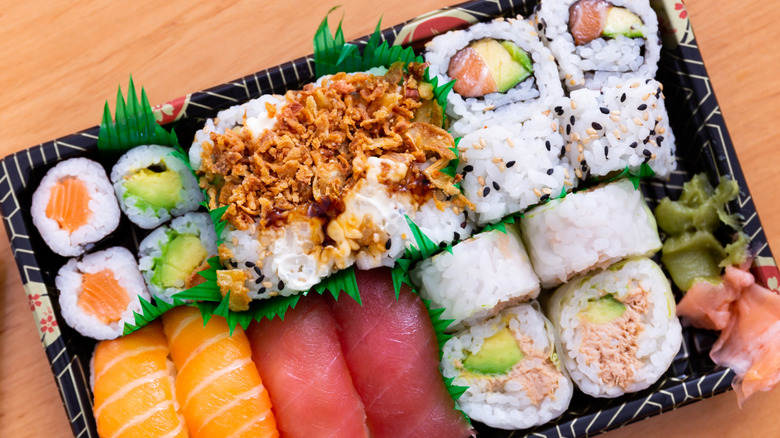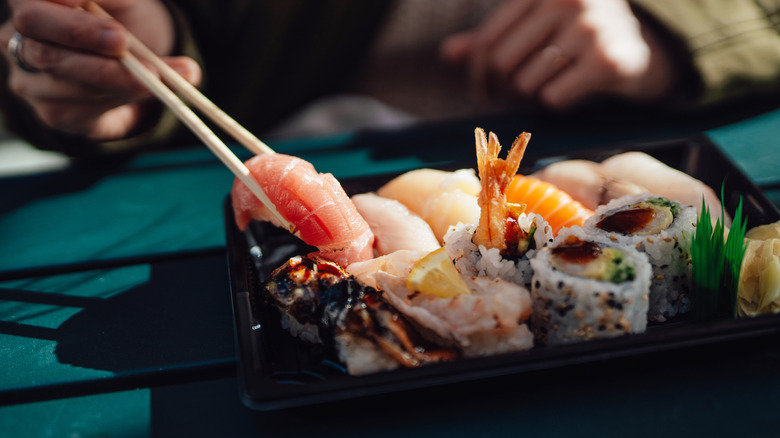Why Your Store-Bought Sushi Comes With Plastic Grass
Sushi is one of the most popular dishes in Japan — and I thank my lucky stars it was shared with the rest of the world. If you're like me, chances are you have your takeout order memorized (although there are a few sushi ordering mistakes to avoid) and it's highly likely you've noticed the plastic grass that always comes in your sushi container. Maybe you're too busy eating your delicious meal to care, but if you're even slightly curious, here's why this grass comes wedged between your rolls.
Sushi grass is actually known as baran or haran in Japan, and serves more than one purpose. Its main function is to keep your sushi pieces separated, which helps preserve the individual flavors of the different kinds of sushi in your container. This way, the taste and aromas won't seep into each other. Sushi grass also adds an aesthetic touch (something that is valued in Japanese cuisine) with its vibrant pop of color.
Fresh leaves were historically used instead of plastic
You may have only seen plastic grass used in your sushi containers, but traditionally, real leaves were used to separate sushi. They often came from bamboo leaves, which have antibacterial properties — this also helped keep sushi bacteria-free and fresh for longer, which was crucial before refrigerators existed. In fact, carving designs into the leaves is considered to be a form of art in Japan, known as sasagiri.
Once sushi became the global hit it is today, the use of fresh leaves became a little impractical. The plastic version is not only more durable, but is much easier and cheaper to mass produce. And while the plastic grass is cut in a way to resemble the real thing, it probably isn't fooling anybody. Real leaves are still used as an element at some of the best sushi restaurants, but if you're getting takeout sushi, practicality seems to trump tradition. So, whether you're ordering nigiri, temaki, or maki, now you know the story behind the little strip of grass tucked into your tray.

